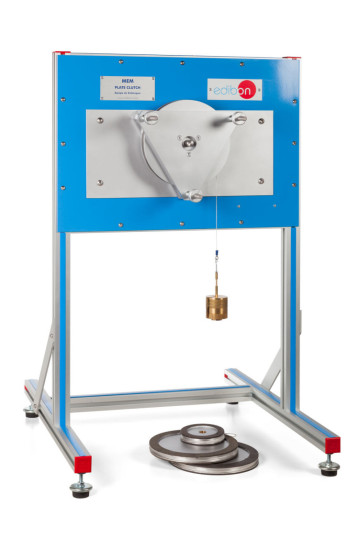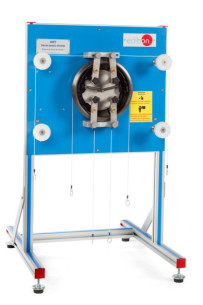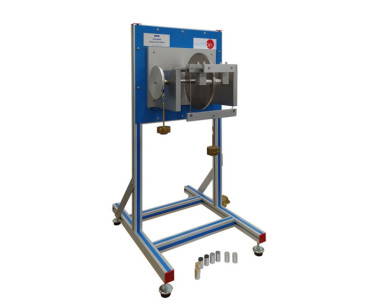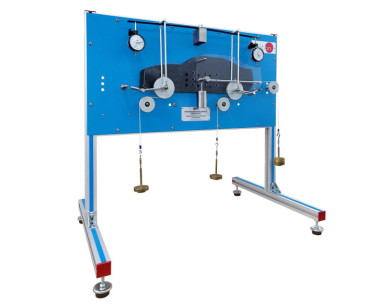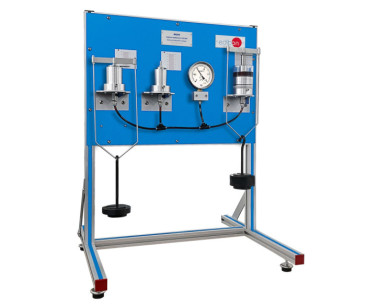MEM Оборудование для изучения сцепления
ИННОВАЦИОННЫЕ СИСТЕМЫ
The Plate Clutch, "MEM", allows to demonstrate the influence of the friction surface and the applied pressure of the springs on the transmitted torque for a friction clutch.
Расширения
ЛАБОРАТОРИИ
НОВОСТИ ПО ТЕМЕ
ОБЩЕЕ ОПИСАНИЕ
The Plate Clutch, "MEM", allows to demonstrate the influence of the friction surface and the applied pressure of the springs on the transmitted torque for a friction clutch. To this end, several clutch discs with different diameters and coefficients of friction and springs, with marked tightening nuts, will be used to increase the pressure in the system.
The "MEM", unit consists of a disc with friction material attached and one or two discs, depending on the study that is to be carried out, that when rubbing with the friction disc it produces a friction force.
These discs are arranged on a stainless steel shaft, so that, the friction disc rotates thanks to a series of weights that have to be hung to produce a torque, whereas said will be stopped by the pressure discs that produce the friction force, since these are joint to the shaft and the structure.
To apply pressure on the system, three springs, with marked tightening nuts are used. All nuts are marked to be able to perform the same force with all, and thus increase pressure throughout the system uniformly. This system transmits the force to the pressure discs that transmit it to the rest of the equipment.
Several friction discs with different diameters and different friction materials are available in order to be able to study both the variation as a function of the size and as a function of the coefficient of friction.
The study can be done with one or two pressure discs.
УПРАЖНЕНИЯ И ПРИМЕРЫ С ИНСТРУКЦИЯМИ
РУКОВОДСТВО ПО ПРАКТИЧЕСКИМ УПРАЖНЕНИЯМ ВКЛЮЧЕНО В РУКОВОДСТВО ПОЛЬЗОВАТЕЛЯ
- Study of the function of a plate clutch.
- Analysis of the relationship between the contact force and the friction moment.
- Determination of the coefficient of friction.
- Study of the influence of the materials used in the friction moment.
- Study of the influence of the radius of the friction surface at the friction moment.
- Investigation of the relationship between pressure applied to friction surfaces, radius of friction surfaces and torque.
- Comparison of torque based on the number of friction surfaces used.
- Demonstration that the minimum torque to maintain rotation is proportional to the axial load and the diameter of the friction surface.
ДОПОЛНИТЕЛЬНОЕ ОБОРУДОВАНИЕ
Оборудование дискового тормоза
Оборудование для изучения силы торможения и ускорения
Простое гидравлическое оборудование
КАЧЕСТВО

ПОСЛЕПРОДАЖНОЕ ОБСЛУЖИВАНИЕ

 Настройки cookie
Настройки cookie

